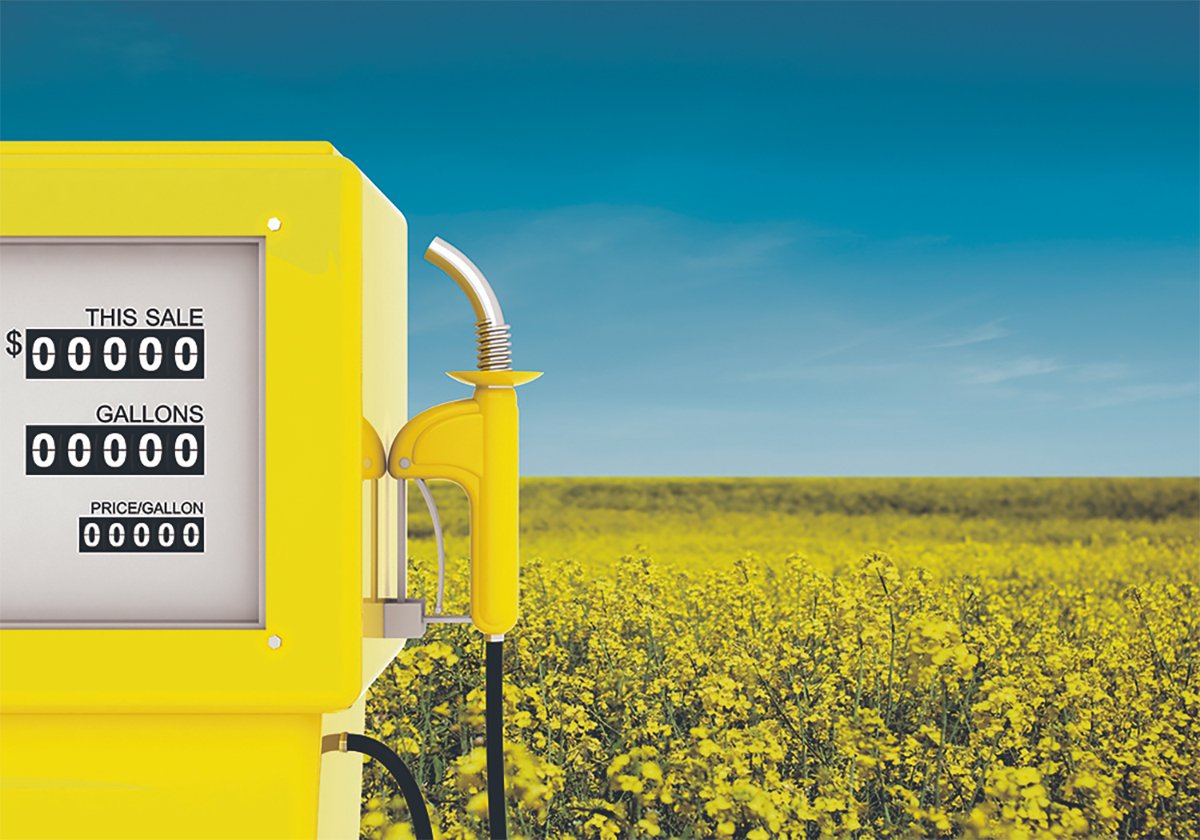A phantom has been stealing the U.S. crop market rally from Canadian farmers.
Its name is The Loonie.
“When you knock (U.S. crop market prices) back to the Canadian dollar, there isn’t much there,” said Alberta Agriculture crop market analyst Charlie Pearson.
“The loonie’s moving up, too.”
American farmers are enjoying a sharp crop market rally, but Canadian farmers aren’t seeing their returns increase much when U.S. prices are converted into Canadian dollars.
Read Also

Biofuel sector happy with federal budget
Advanced Biofuels Canada says new Biofuel Production Incentive is a lifeline until CFR amendments are in place.
The Canadian dollar was 97.2 cents per U.S. dollar Oct. 19, a big increase from 92 cents a few weeks ago.
Canadian crop market analysts have hoped since July that the loonie wouldn’t break through the resistance level of 93 cents, but in the first week of October it moved higher.
The loonie’s increasing value drops the value of Canadian farm commodities because most world prices are based on U.S. prices.
That’s partly why soybean futures prices have surged by more than 10 percent this month, while canola prices are up only about five percent. Soybean futures are priced in U.S. dollars and canola in Canadian.
Wheat prices were lower in recent Canadian Wheat Board Pool Return Outlooks because of the general slide in world wheat markets since mid-summer, and analysts said the U.S. market rebound won’t likely change that much.
Some analysts say there is more to the corn and soybean rally than just the slumping U.S. dollar.
Mike Krueger of the Money Farm in Fargo, North Dakota, said the fact that soybeans and corn led the rally suggests it isn’t just a foreign exchange phenomenon.
“Wheat should have been the first thing to rally on a weak U.S. dollar. That didn’t happen,” Krueger said.
“I think there are some real fundamental drivers here.”
Short on soybeans
Krueger said strong demand for U.S. soybeans from China is hard for American grain companies to meet because the wet weather is holding up off-the-combine deliveries to elevators, and there’s almost nothing in storage from the 2008-09 crop.
Krueger said tightness in soybean supplies is provoking a rally across the crop commodity spectrum.
“It’s going to start to drag corn with it.”
However, he admitted it’s difficult to assess how much of the rally is due to the weak U.S. dollar and how much is the result of wet weather on U.S. crops.
“That’s a hard question. Everyone wants to know the answer to that. Some people think it’s all the U.S. dollar. I think it’s 50-50.”
Market gurus have long predicted the collapse of the U.S. dollar, and its long-term decline is accepted by most mainstream market analysts.
They cite the struggling U.S. economy, massive U.S government deficits and America’s enormous trade deficit with countries such as China as reasons for the weak greenback.
At the same time, commodity-exporting nations with trade surpluses, like Canada and Australia, have surging currencies and better government finances.
They also have more regulated banking systems, so unlike the U.S., they have had fewer financial implosions since 2007.
Most economists say a falling U.S. dollar will help increase U.S. exports, which will seem cheaper to buyers, and narrow the trade surplus. That should eventually help lead America out of its economic problems.
To this point, the administration of president Barack Obama has not acted aggressively to defend the value of the U.S. dollar and critics believe it is allowing the greenback to sink to create jobs in export industries.
However, others feel that the U.S. dollar could sharply rise soon, especially if the fall and winter bring renewed economic crisis. In late 2008, the financial market meltdown saw investors and governments seek refuge for their wealth in the U.S. dollar, which many consider a safe haven in bad times.
The same could occur if another market slump strikes, they say.















